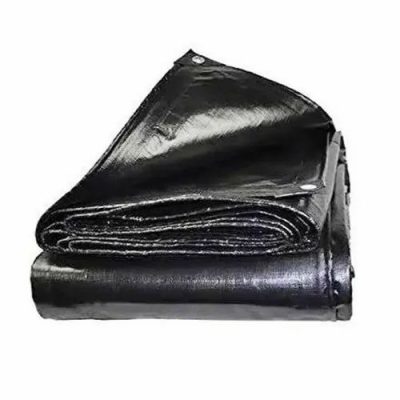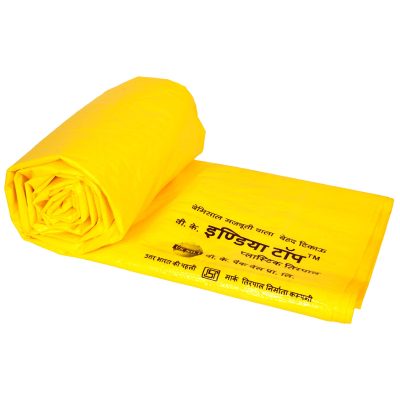PVC tarpaulins are commonly used for heavy-duty protection due to their durability and excellent resistance to various environmental factors. If you need heavy-duty protection with PVC tarpaulins, here are some considerations and best practices:
- Tarpaulin Grade and Thickness:
- Opt for a high-grade PVC tarpaulin with a thicker material. Heavy-duty tarpaulins are available in different thicknesses, usually measured in millimeters or ounces per square yard (Oz/Sq.Yd). The thicker the tarpaulin, the more robust and protective it will be.
- Reinforcements:
- Look for tarpaulins with reinforced edges and corners. Reinforced areas help distribute stress and prevent tearing, which is essential for heavy-duty use.
- Grommets and Tie-Downs:
- Ensure the tarpaulin has sufficient grommets (metal or plastic eyelets) evenly spaced along the edges. This allows you to secure the tarpaulin firmly using ropes or bungee cords to prevent it from shifting or flapping in the wind.
- Waterproofing:
- Choose a PVC tarpaulin explicitly designed to be waterproof. Heavy-duty tarpaulins often have superior waterproofing capabilities to protect against rain, snow, and moisture.
- UV Resistance:
- If the tarpaulin will be exposed to direct sunlight, select one with UV-resistant properties. UV resistance helps maintain the tarp’s structural integrity and prevents degradation from sun exposure.
- Durability in Extreme Weather:
- Consider your specific environmental conditions. If the tarpaulin will be exposed to extreme weather conditions such as strong winds, hail, or heavy snow, choose a tarpaulin designed to withstand those conditions.
- Proper Installation and Tension:
- When securing the tarpaulin, ensure it is stretched tightly and evenly to prevent sagging and pooling of water. Proper tensioning helps maintain the tarp’s effectiveness.
- Regular Maintenance:
- Periodically inspect and clean the tarpaulin to remove dirt, debris, and any potential sources of abrasion. Cleaning can help extend its lifespan.
- Storage:
- When not in use, store the tarpaulin in a cool, dry place away from direct sunlight. Proper storage can prevent UV damage and extend its usable life.
- Consider Customization:
- If your heavy-duty protection needs are unique, consider custom-made PVC tarpaulins. Customization allows you to tailor the tarpaulin to your specific requirements in terms of size, shape, and features.
- Safety Considerations:
- Ensure that the tarpaulin is securely fastened to prevent accidents or damage caused by wind gusts. Loose tarpaulins can pose safety hazards.
- Warranty and Quality Assurance:
- Choose a reputable brand or supplier known for producing high-quality heavy-duty PVC tarpaulins. Check if they offer warranties or guarantees for their products.
Remember that heavy-duty PVC tarpaulins are versatile and can be used for various applications, including covering vehicles, construction sites, industrial equipment, and more. Selecting the right tarpaulin with the appropriate features and taking proper care of it will ensure effective heavy-duty protection for your assets and equipment.


















